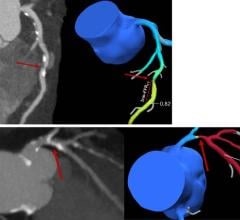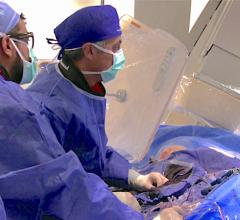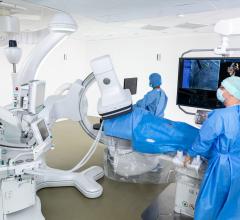Durable balloon angioplasties can be done without exposure to contrast material or radiation, when performing endovascular treatment of occlusive and stenotic lesions of the femoral- popliteal arterial segment. Research about this new treatment was published in the December issue of the Journal for the Society of Vascular Surgery.
Researchers noted that open bypass operations are more durable in the long-term. However when performed through a puncture in the groin under local anesthesia, they can require the use of fluoroscopy (radiation exposure) and contrast material. “These procedures require nephrotoxic contrast material necessary for arteriography, so surgeons can visualize arteries on X-ray,” said Enrico Ascher, MD, from The Vascular Institute at Maimonides Medical Center, Brooklyn, N.Y. He added that such exposure sometimes causes severe allergic reactions or kidney failure, with the risk of kidney damage is increased in diabetic patients.
Dr. Ascher said peripheral arterial disease patients who do not respond to controlled exercise therapy and pharmacological manipulation may become candidates for invasive types of treatment in order to treat foot pain at rest, non-healing wounds or inability to walk without leg pain.
“However our study showed that in many cases duplex scanners can be utilized rather than X-rays in these procedures, with or without the use of stents,” said Dr. Ascher. “In addition to patient safety, this modality helps minimize the vascular surgeon’s exposure to radiation, which can cause conditions such as impaired vision, skin damage and infertility.”
Researchers reported that the technical advantages of duplex-guided treatment include direct visualization of the puncture site, accurate selection of the proper size balloon and stent, and confirmation of the adequacy of the technique by hemodynamic and imaging parameters.
In this study 196 patients (ages 42 to 97) had a total of 253 attempted balloon angioplasties of the superficial femoral (SFA) and/or popliteal arteries under duplex guidance in 218 limbs. Critical ischemia was indicated in 38 percent of cases and disabling claudication was in 62 percent. Conditions that presented and percentages of the total patients were: hypertension, 78; diabetes, 51; chronic renal insufficiency, 41; smoking, 39 and coronary artery disease 37.
Under direct duplex visualization, the common femoral artery is cannulated and a guide wire is directed into the proximal SFA across the diseased segments; it is then parked at the tibio-peroneal trunk. Diseased segments are then balloon dilated, with the balloon’s diameter and length chosen according to measurements obtained through duplex scan. Hemodynamically significant defects causing diameter reduction more than 30 percent and peak systolic velocity ratio more than 2 were corrected with a variety of self-expandable stents under duplex guidance.
Overall technical success of the duplex guided method was 93 percent (236 of 253 cases). Overall limb salvage rates were 90 and 94 percent at six and 12 months respectively. Intraluminal stents were placed in 65 percent of successful cases and end-stage renal disease was the only significant predictor of subintimal dissection failure in patients with femoral-popliteal occlusions (five of 17 cases).
###
About Journal of Vascular Surgery
Journal of Vascular Surgery provides vascular, cardiothoracic, and general surgeons with the most recent information in vascular surgery. Original, peer-reviewed articles cover clinical and experimental studies, noninvasive diagnostic techniques, processes and vascular substitutes, microvascular surgical techniques, angiography and endovascular management. Special issues publish papers presented at the annual meeting of the Journal's sponsoring society, the Society for Vascular Surgery. Visit the journal web site at www.jvascsurg.org.
About the Society for Vascular Surgery
The Society for Vascular Surgery is a not-for-profit medical society that seeks to advance excellence and innovation in vascular health through education, advocacy, research, and public awareness. SVS is the national advocate for 2,400 vascular surgeons dedicated to the prevention and cure of vascular disease. Visit the web site at www.VascularWeb.org.
Society for Vascular Surgery
Emily Kalata
email: [email protected]
phone: 312-202-5609


 August 14, 2025
August 14, 2025 








